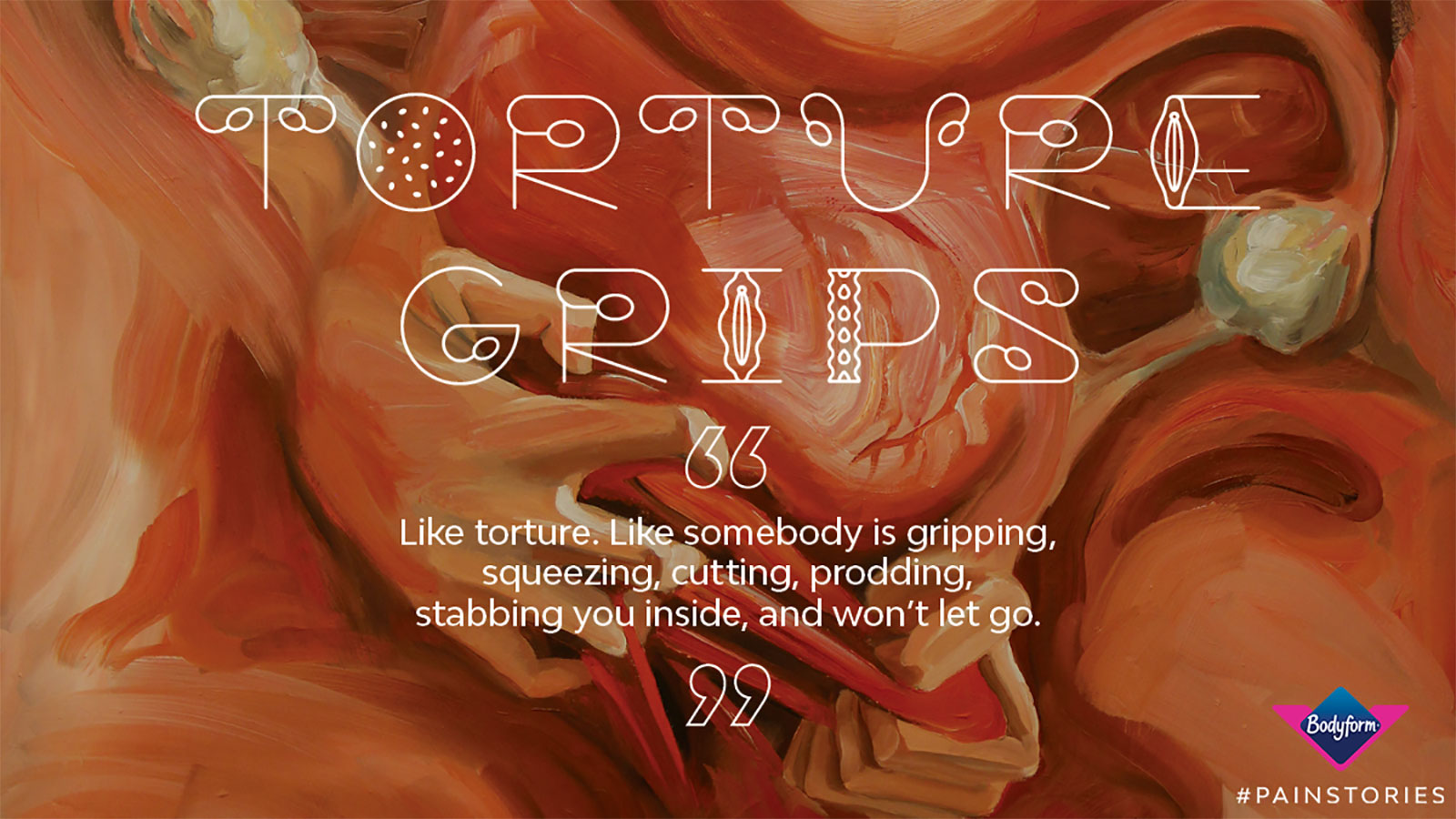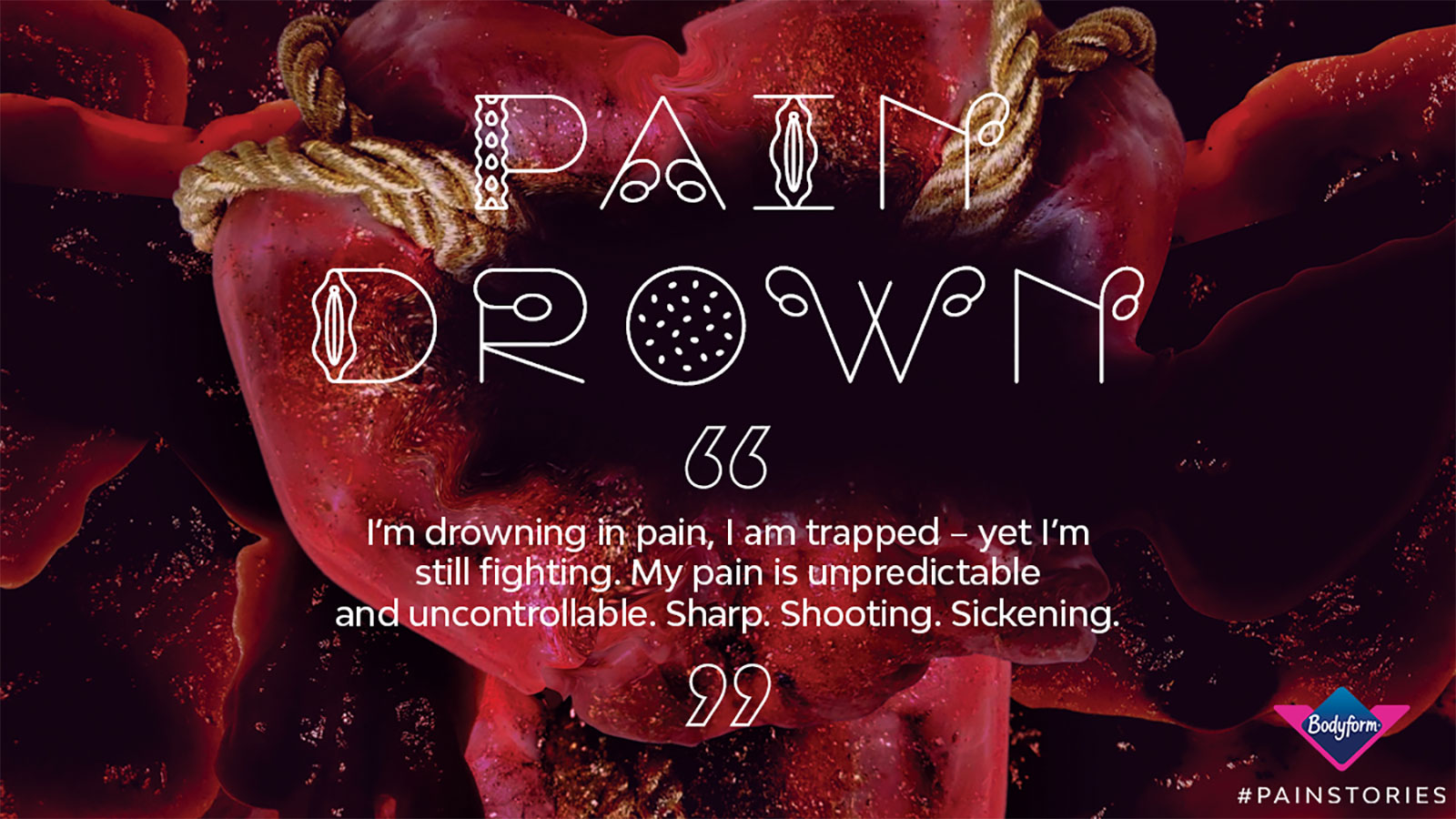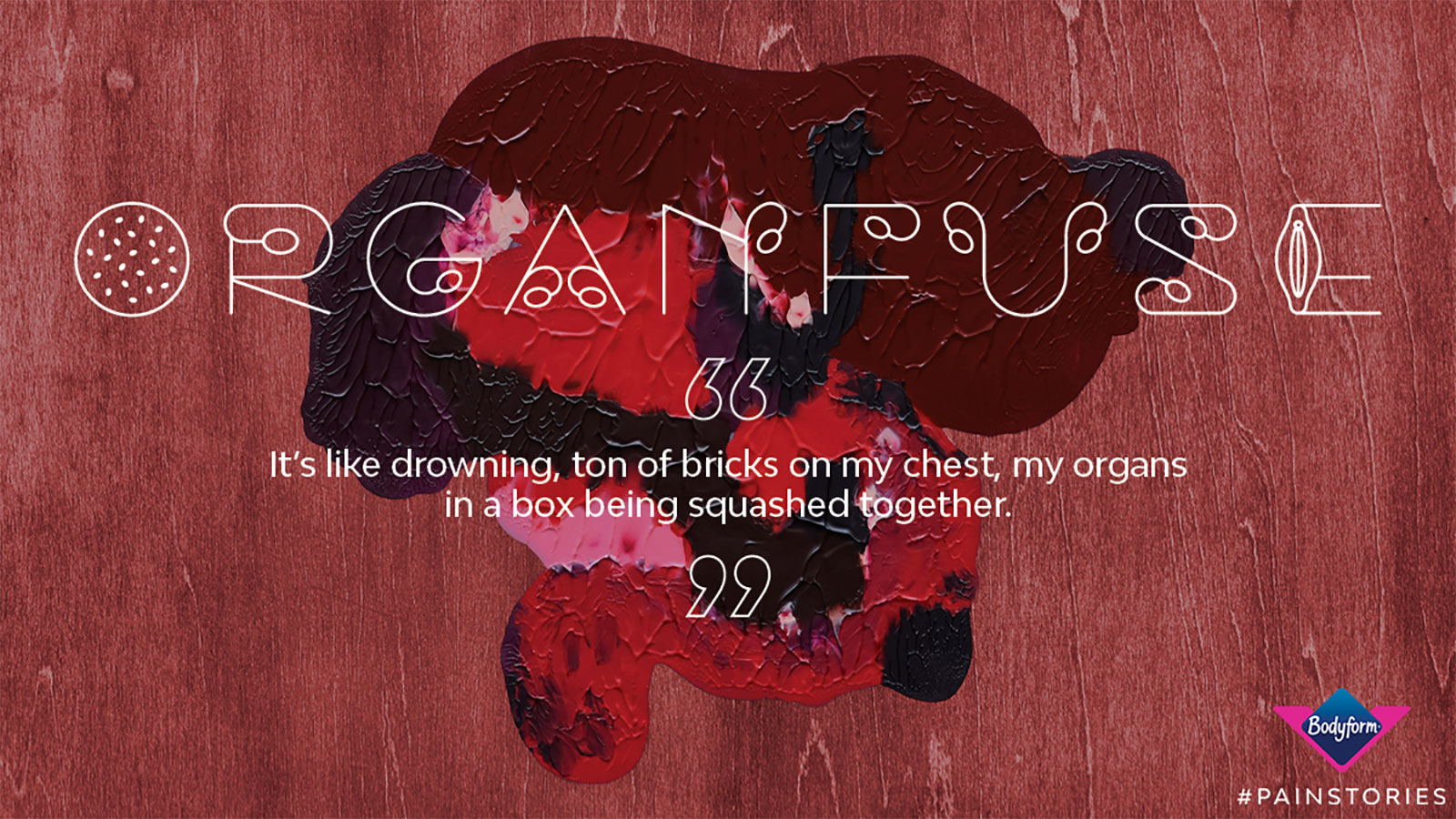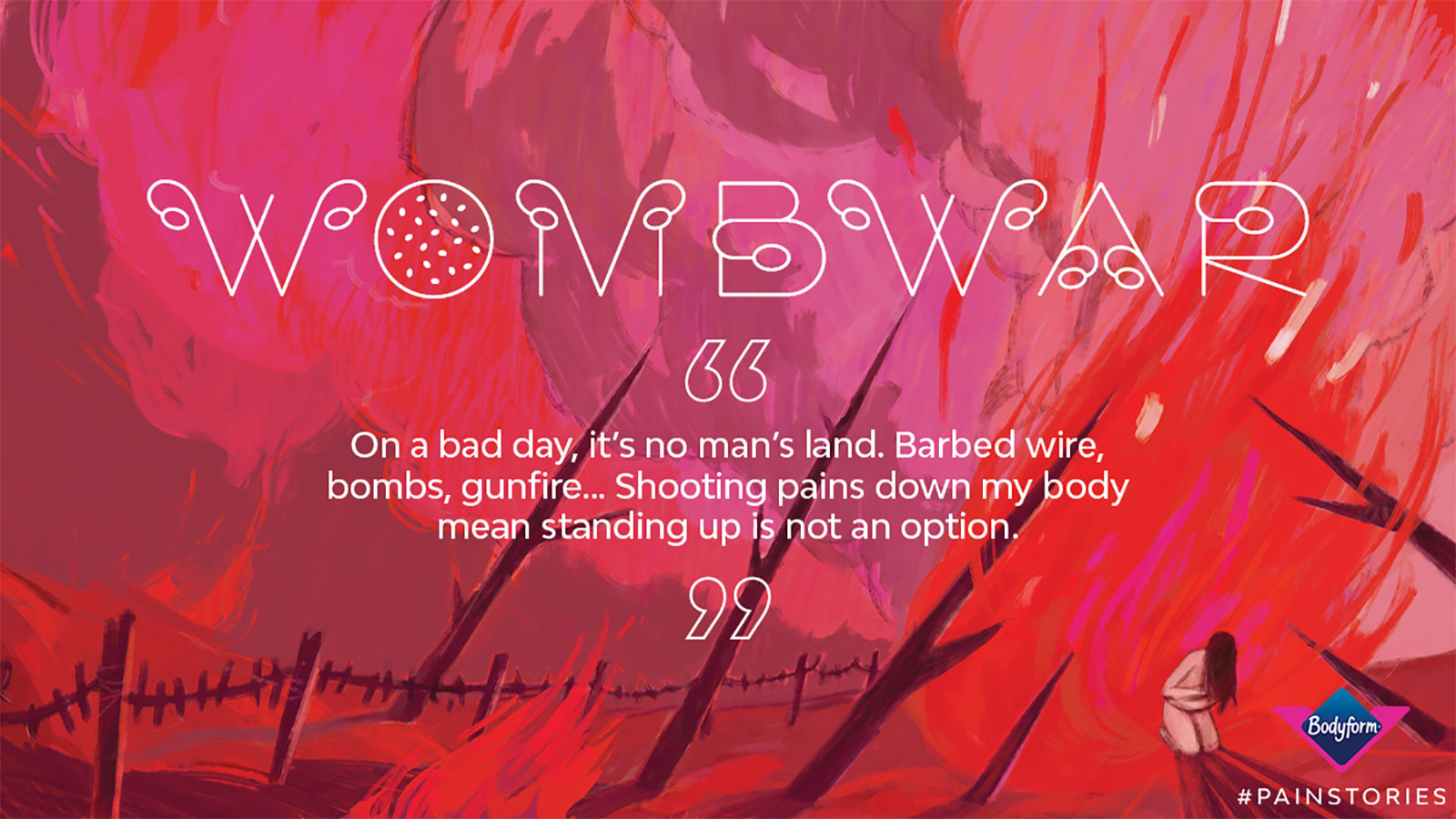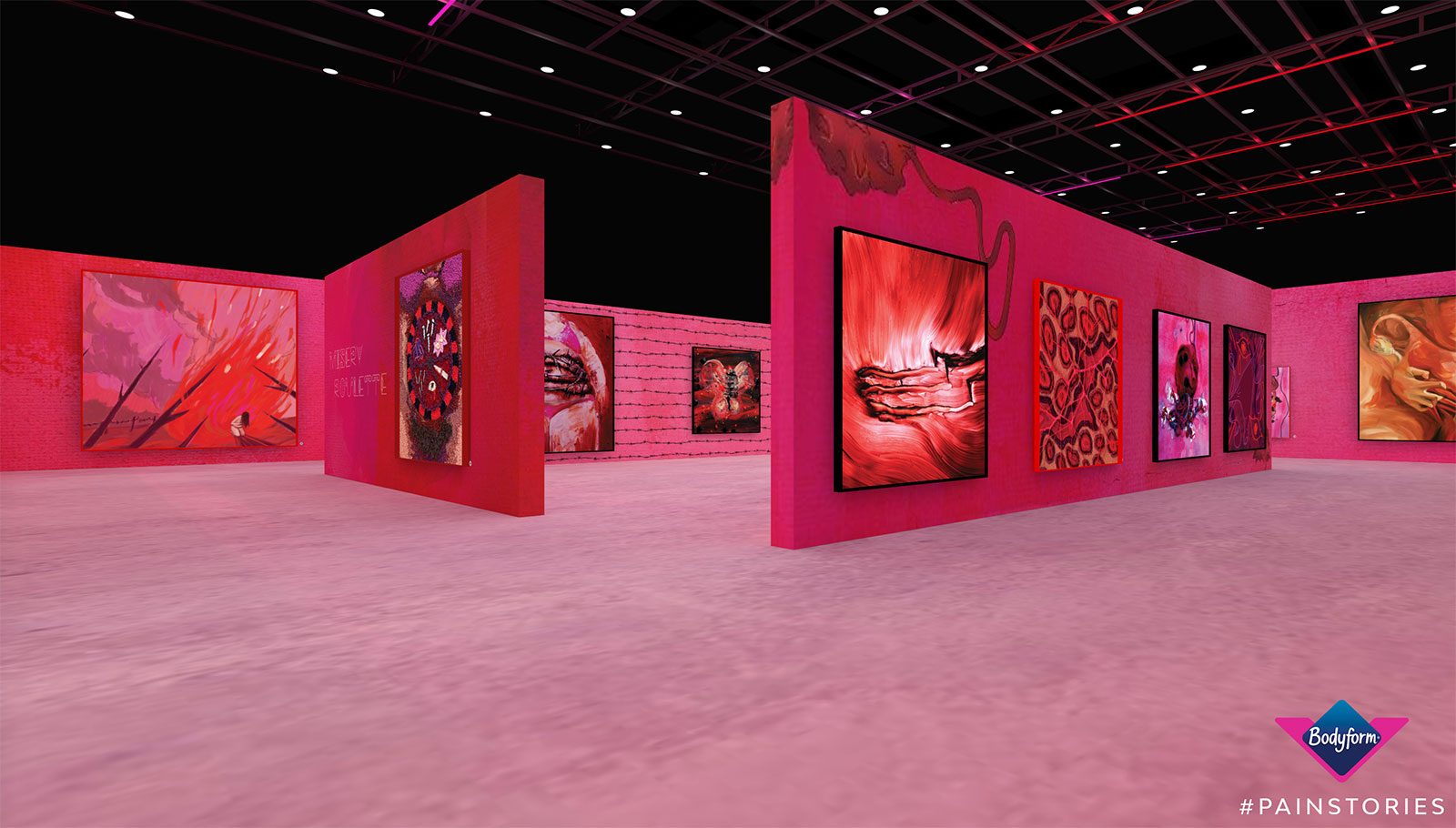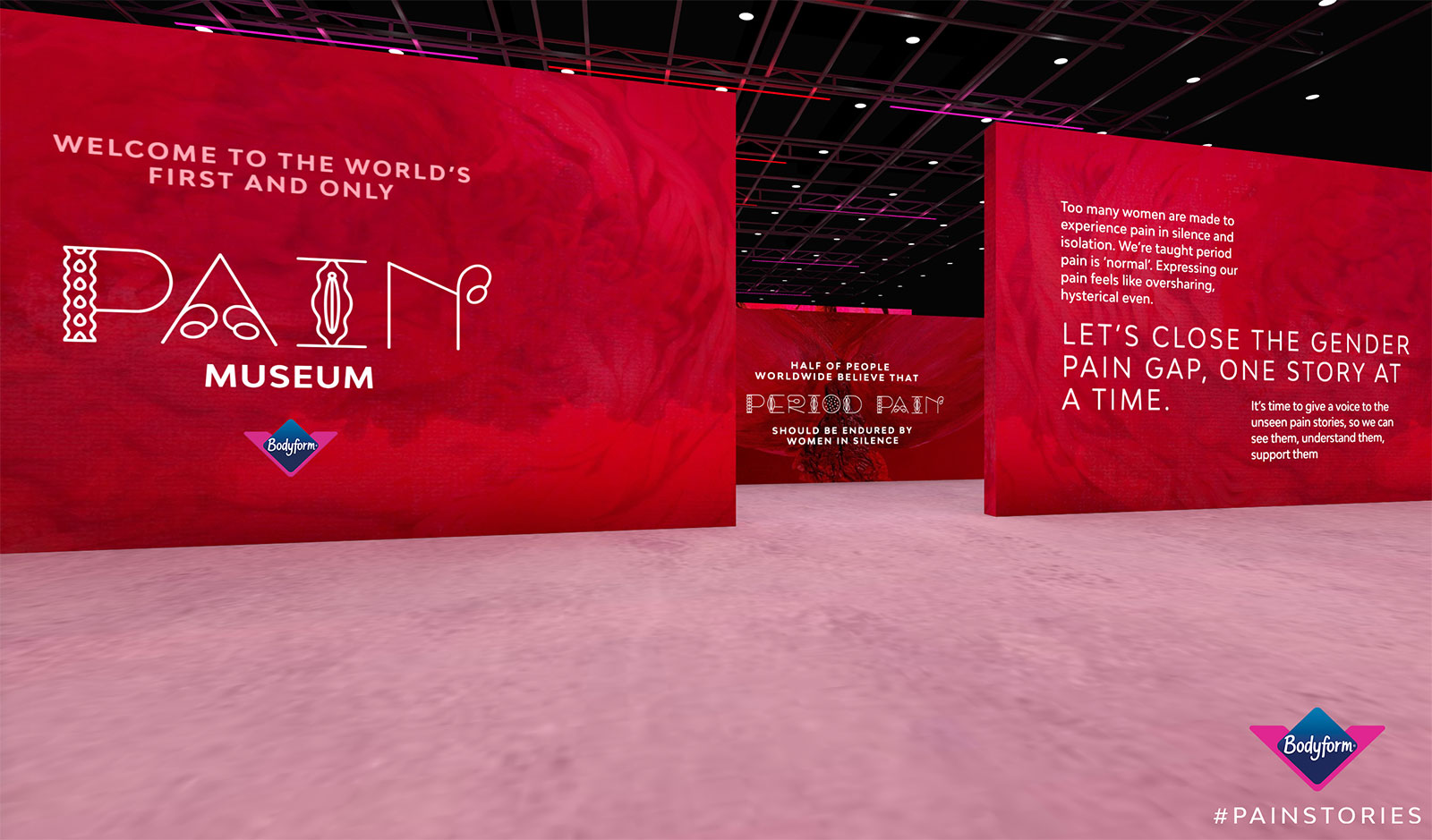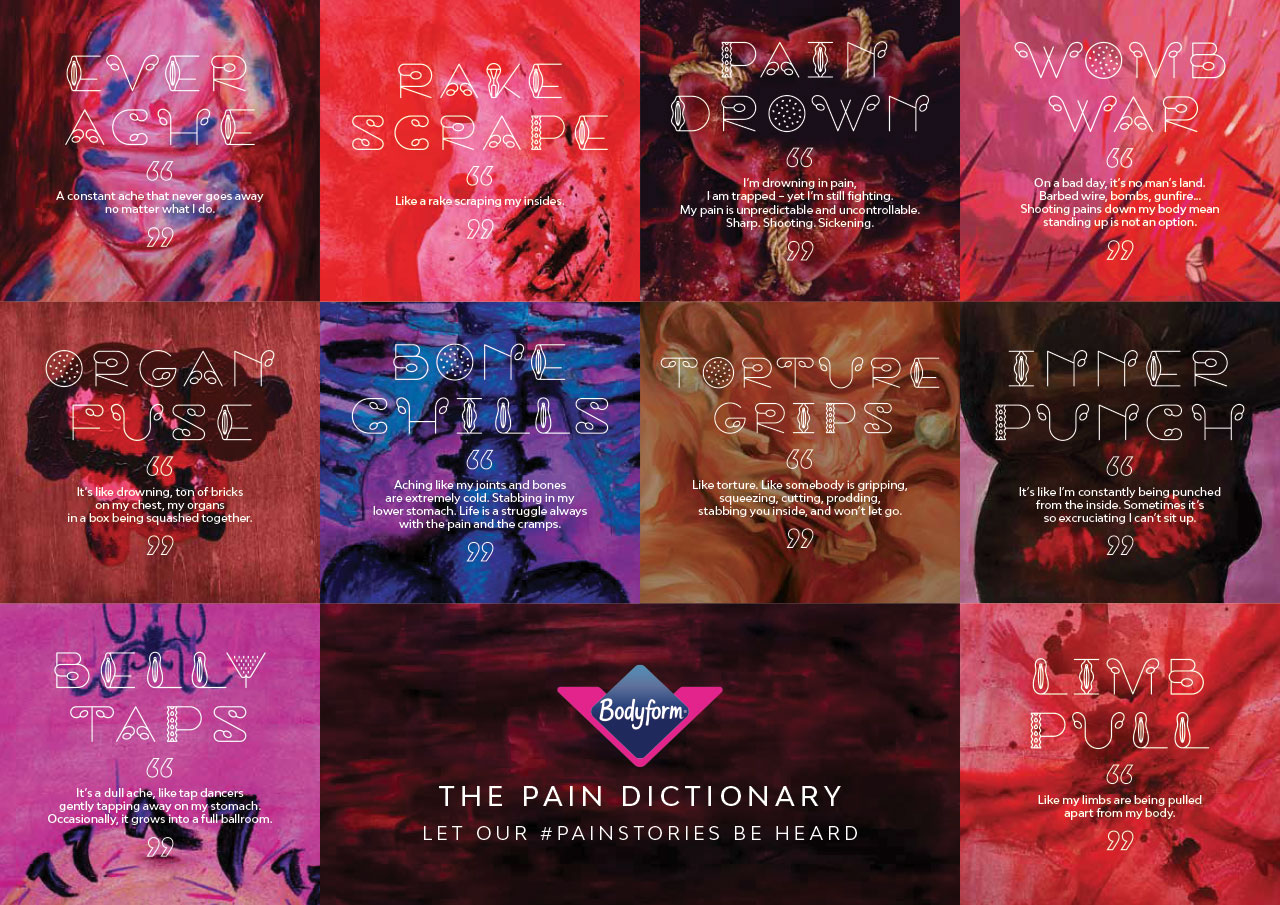Bodyform Puts Uterine Pain Into Words With #PainStories
Finally, a language for the twisting and squeezing happening in there
You know what sucks? Menstrual pain. You know what’s worse? Endometriosis, an often incredibly painful uterine disorder that takes an average of seven and a half years to diagnose. Some 40 percent of people with endometriosis have given up or lost a job because of it; that’s how bad it can feel.
So why does it take so long to discover? Because young menstruators are educated to accept even unusually, debilitatingly intense uterine pain as a matter of course.
Bodyform/Libresse is taking a shot at changing that. Its latest work, “Pain Stories” by AMV BBDO, is an Instagram-based project designed to educate people about the nuances of menstrual and ovarian pain—hopefully providing the tools needed to gauge whether one’s menstrual discomfort is normal, or symptomatic of something else.
“There is a big problem in the world where people feel that women should just deal with their pain. A lot of women think painful periods is normal, but actually it’s not, particularly when the periods are starting to affect activities in your daily life,” says Dr. Shireen Emadossadaty, GP and partner on Libresse’s “Pain Stories.”
“Opening up the conversation around period pain will encourage women to see their GP, to be persistent about their symptoms, and hopefully we can bring down that diagnosis time. You’re not alone, period pain is common, but it’s not normal and it’s not something you should be suffering with.”
It merits saying, here, that we know women are not the only people who experience menstrual pain; trans men and other gender minorities do as well. But to put Dr. Emadossadaty’s words in context, research shows women’s pain tends to be taken less seriously than men’s, as a rule, in medical settings (never mind everyday ones). This is also something that happens to be true for Black Americans, and, as gender fluidity becomes more visible and common, is likely to prove true for members of the trans community and other gender minorities. Just putting that out there.
The “Pain Stories” project has multiple components. A subsite gathers the stories others have shared about their pain and experiences. And it includes a downloadable pain dictionary to help notice pain in a more nuanced way. Forget the pain scale of 1-10; have you got “inner wringing”? What about bowel bashes, or fire sickness?
This isn’t just anodyne creative play; once, for a sports injury, an osteopath asked me if the pain I felt in a knee felt hot or cold, numb, or had a quality of spread to it. Being able to expand one’s pain vocabulary makes it easier to identify a big problem or determine its source. Pain is not worth ignoring, especially when it begins to impact other realms of life, or simply one’s mood. (There is actually a subtle, little-known film about how chronic pain can cascade from, and into, more serious personal impacts, featuring Jennifer Aniston and titled Cake.)
“The Pain Dictionary was born out of my own experience of struggling to find language to express my endometriosis pain,” says Augustine Cerf, a creative at AMV BBDO. “I hope that people in pain might identify with the pain depictions and recognize their own pain in them, which could accelerate diagnosis.”
Bodyform/Libresse also published a Pain Report, which explores the global gender pain gap, explaining how we talk about it (and why we don’t more often). It features interviews from 30 female experts across multiple disciplines, and 20 advocates with painful conditions. Insights were drawn from countries like Malaysia, Colombia, the U.K., the Nordics, France, Russia, Jordan, Saudi Arabia, Argentina, Mexico and China. Many taboos are explored, as well as trans and non-binary experiences.
Lastly, the Pain Museum (accessible through the subsite), created by Ketchum, is a virtual space that takes people on a visual journey through pain. It features interviews with Lauren Mahon and Dr. Shireen, as well as other medical experts and people with endometriosis.
“176 million women globally have endometriosis, and we need a language to help them articulate their experiences so they can get the help they need,” says Tanja Grubner, who leads femcare global marketing and communications at Essity, the parent company of Bodyform/Libresse.
“Listening to how women feel is critical to driving change, and we know it’s so important to understand the problems before we can start solving them. By sharing our extensive research, we now hope to work closely with charities and health partners together and we will start to bring about societal change and make the world that bit easier for women globally.”
Pain Stories builds on the beautiful “Womb Stories,” released last July, which itself followed up the still-infectious “Viva La Vulva.”
CREDITS
Client: Essity
Brand: Libresse/Bodyform
Campaign title: #Painstories by Libresse
Client name: Tanja Grubner, Global Marketing & Communications Director, Femcare
Client name: Luciana de Azevedo Lara – Global Brand Communications Manager, FemCare
Agency: AMV BBDO
CCO: Alex Grieve
ECDs: Nadja Lossgott & Nicholas Hulley
Creative Directors: Toby Allen & Jim Hilson, Nadja Lossgott & Nicholas Hulley
Copywriter & Art Director: Augustine Cerf & Lauren Peters
Designer: Mario Kertstra, Jack Donovan
Agency Planner: Margaux Revol, Beatrice Farmelo, Bridget Angear
Agency Account Team: Sarah Douglas, Sarah Hore-Lacy, Katie Gorrod
Agency Creative Producer: Rosie Stipic
Business Affairs: Michelle Holmes
PR Agency: Ketchum
Practice Director: Amber Organ
Senior Account Manager: Victoria Bond
Research Company: The Outsiders
Researchers: Steven Lacey, Zoë McQuillin



 Events
Events
